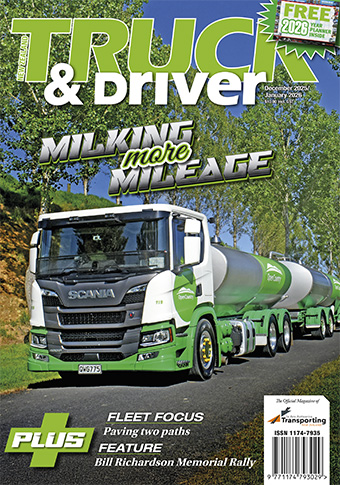
Spring Storms and Strategic Shifts
Posted: 24-Oct-2025 |
As I write this, a violent spring storm is hammering the South Island and lower North Island. Parts of the West Coast are cut off by flooding. Hurricane strength winds have hit Canterbury, where a local state of emergency has been declared. Several trucks have been blown onto their sides.
These are dangerous conditions for transport.
I’m thinking of the men and women out there keeping our supply chain open. Please – stay safe. Make the right calls for your people. Safety must come first. Sometimes customers have to wait. That’s what happens in a state of emergency.
Building Blocks for a More Productive Future
Weather aside I’ve been reflecting on some positive changes, important building blocks starting to come together that will deliver major productivity gains for our sector.
Don’t get me wrong, these aren’t the kind of changes that will magically drive up freight demand before Christmas. After the longest economic downturn since 1987, recovery is proving slower than expected. It took years to get here, and it won’t be fixed overnight.
But what is being built today are the foundations of a framework that will deliver transport infrastructure faster, smarter, and cheaper tomorrow.
When your balance sheet is burning right now, this might sound unimportant.
But don’t forget, we are where we are today, because we didn’t make good decisions to plan and invest yesterday, and over the last decade.
The building blocks I am talking about will put us in a much stronger position in our future.
Open for Investment
The changes to the Overseas Investment Act and the New Zealand Infrastructure Investment Summit sent a clear message: New Zealand is open for business.
These aren’t just headlines. They’re laying the groundwork for investment that can improve infrastructure and, ultimately, the efficiency of our freight networks. And quietly behind the scenes, we are seeing international investors taking notice.
Fast-Track Consents and Port Progress
Fast-track consenting is starting to deliver. Port of Auckland was first off the rank – consent to expand a main wharf granted in just 66 days, even consulting with hundreds of stakeholders along the way. NorthPort’s extension is now approved. Tauranga should be next.
This is more than just paper work approvals. They’re real opportunities for faster movement of goods and better productivity across the country.
Strategic Planning and Coordination
We’re also seeing a more strategic approach take shape when it comes to infrastructure planning.
The Infrastructure Commission is driving initiatives like the National Infrastructure Plan (NIP) and Investment Prioritisation Process (IPP). These tools provide clearer direction for the projects that matter most – and help prevent politicians from binning them between election cycles.
Add to that the formation of the Freight Council – bringing government and industry together to align priorities – and you start to see the foundations of a more connected, expertise-based system.
And if you want evidence these changes work, look no further than Ireland and Singapore which offer great lessons in how productivity can be boosted when investment, planning, and regulatory certainty align. By signaling that we’re open for business, New Zealand can attract the expertise, capital, and partnerships that help us modernise faster.
Looking Ahead to 2026 and beyond
What’s encouraging is that we’re seeing coordinated components of an infrastructure pipeline being delivered – international investment, legislative changes, fast-track approvals, and evidence-based strategic prioritisation of projects.
Should it survive political meddling – and I sincerely hope it does – this framework will deliver productivity increases that future New Zealand can bank year after year.
The challenge now is making sure our industry is ready to seize those opportunities – through fleet investment, skills development, and collaboration across the freight network.
The Signal Is Clear
The country is saying: we’re ready to invest, we’re ready to build, and we’re ready to move goods more efficiently.
For road carriers, that’s not just good news. It’s a clear signal that our sector will play a central role in driving New Zealand’s productivity over the next few years.
So keep an eye on the ports. Watch how the Infrastructure Commission’s plans unfold. And think about how you can position your business to take advantage of what’s coming.
2026 is shaping up to be the year where all this effort comes together.
Let’s stay engaged, stay informed, and make the most of what’s ahead.
Justin Tighe-Umbers, Chief Executive, National Road Carriers Assn



 + EQUIPMENT GUIDE - FREE
+ EQUIPMENT GUIDE - FREE
